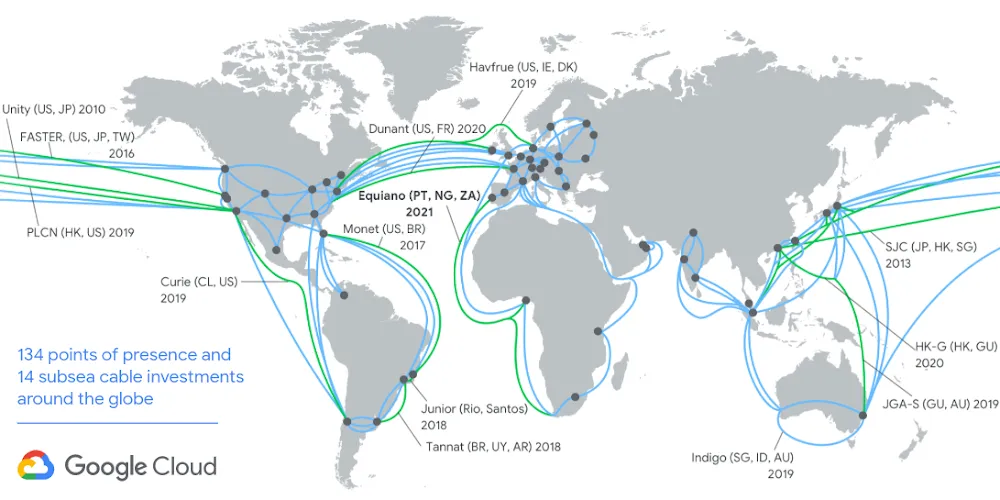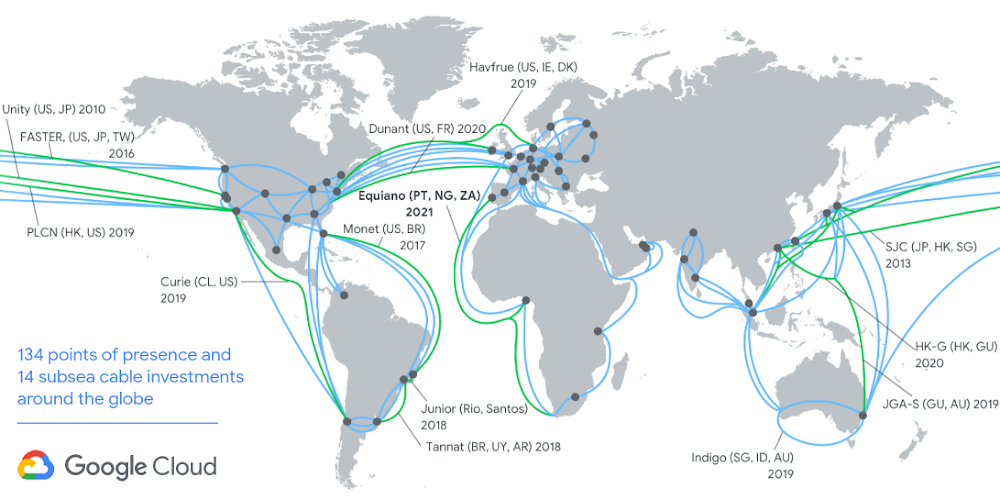
How Google is using submarine cables as earthquake, tsunami warning systems

Google’s 15th subsea cable investment is rumored to be a $400 million one, connecting Italy to India. It’s called Blue-Raman
Google owns the largest submarine cable network in the world. Undersea cables make it possible for us to use the Internet to share, search, send, and receive information at the speed of light. And now, these fiber optic assets may just prove useful to improve earthquake and tsunami warning systems around the globe.
Scientists have been toying with the idea of leveraging subsea infrastructure to detect seismic data since 2018. These approaches have required special sensing fiber and additional equipment, and have proven effective over distances of up to 100 km.
Google, meanwhile, has developed a technique that could work over tens of thousands of kilometers – using nothing but the world’s existing fiber optic systems to detect disturbances on the seafloor.
“One of the properties of light that is tracked as part of the optical transmission is the state of polarization (SOP),” Google explains in a blog post. The SOP changes in response to mechanical disturbances along the cable.
In late 2019, Google began to track these disturbances, looking specifically for spectral signatures of seismic activity. The first earthquake it detected was on January 28, 2020. A magnitude 7.7 earthquake was reported off of Jamaica – 1,500 km away from the closest point of one of Google’s cables! In further detections, Google’s researchers were able to validate their observations with established seismic monitoring stations.
An analysis of Google’s data reveals that not only can we detect earthquakes emanating from tectonic plates, but we can also detect pressure changes in the ocean itself, which could help predict tsunamis.
If Google finds a way to convert its demonstrations into a fully-working system, it could prove monumental for tsunami detection. As Google points out, most tsunami detection equipment today is either onshore or scattered throughout the ocean. The former doesn’t give coastal communities enough time to evacuate and the latter is limited by the speed of the traveling wave — a maximum of 800 km/hr for a deep-sea wave. On the other hand, when a cable runs near the earthquake epicenter, a tsunami warning system that transmits data at the speed of light could communicate a warning to potentially affected communities in milliseconds.
Google is now looking to explore advanced computing and machine learning to provide seismic research communities with a source of complementary information to enable early warnings for earthquakes and tsunamis.







